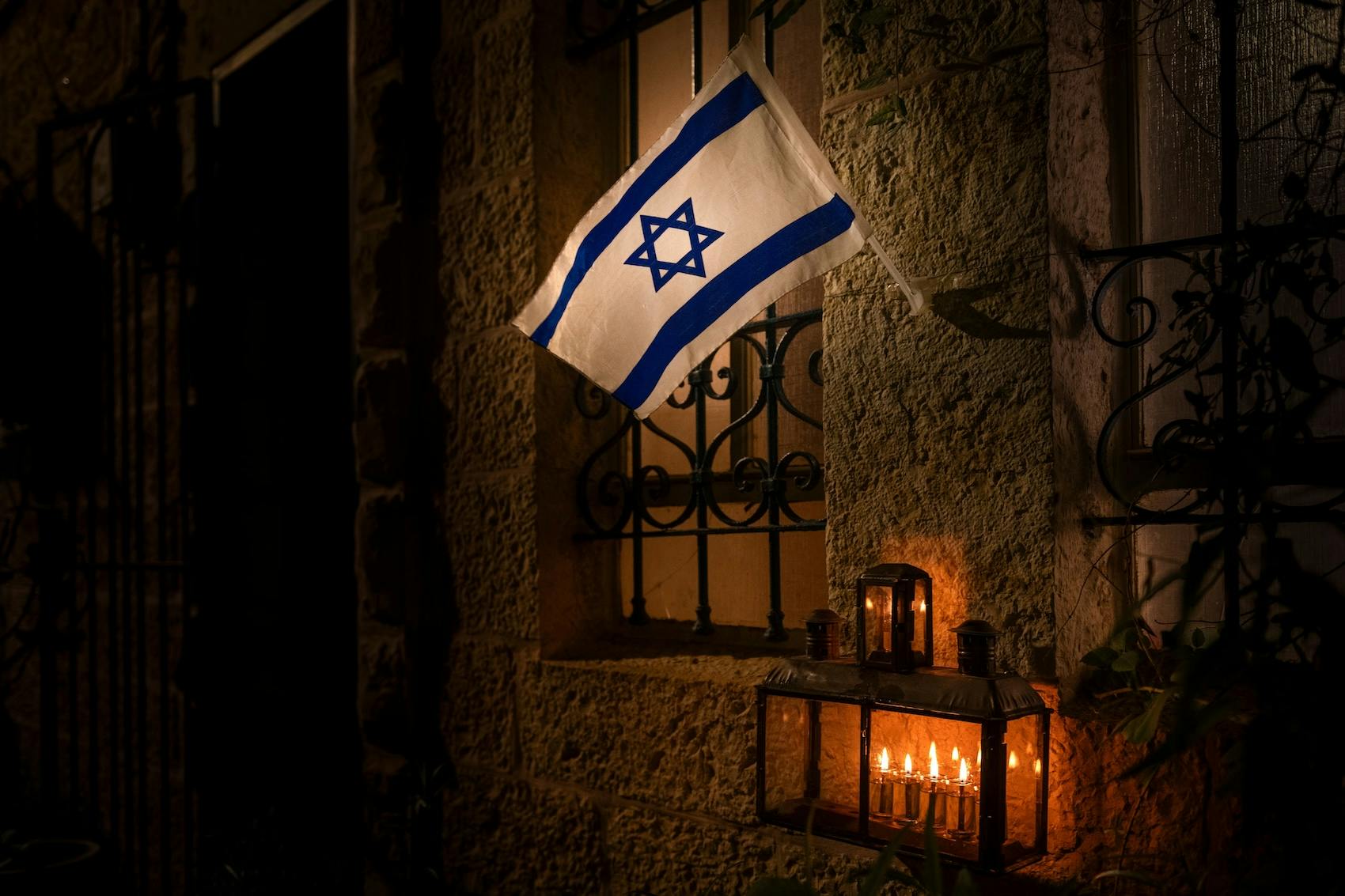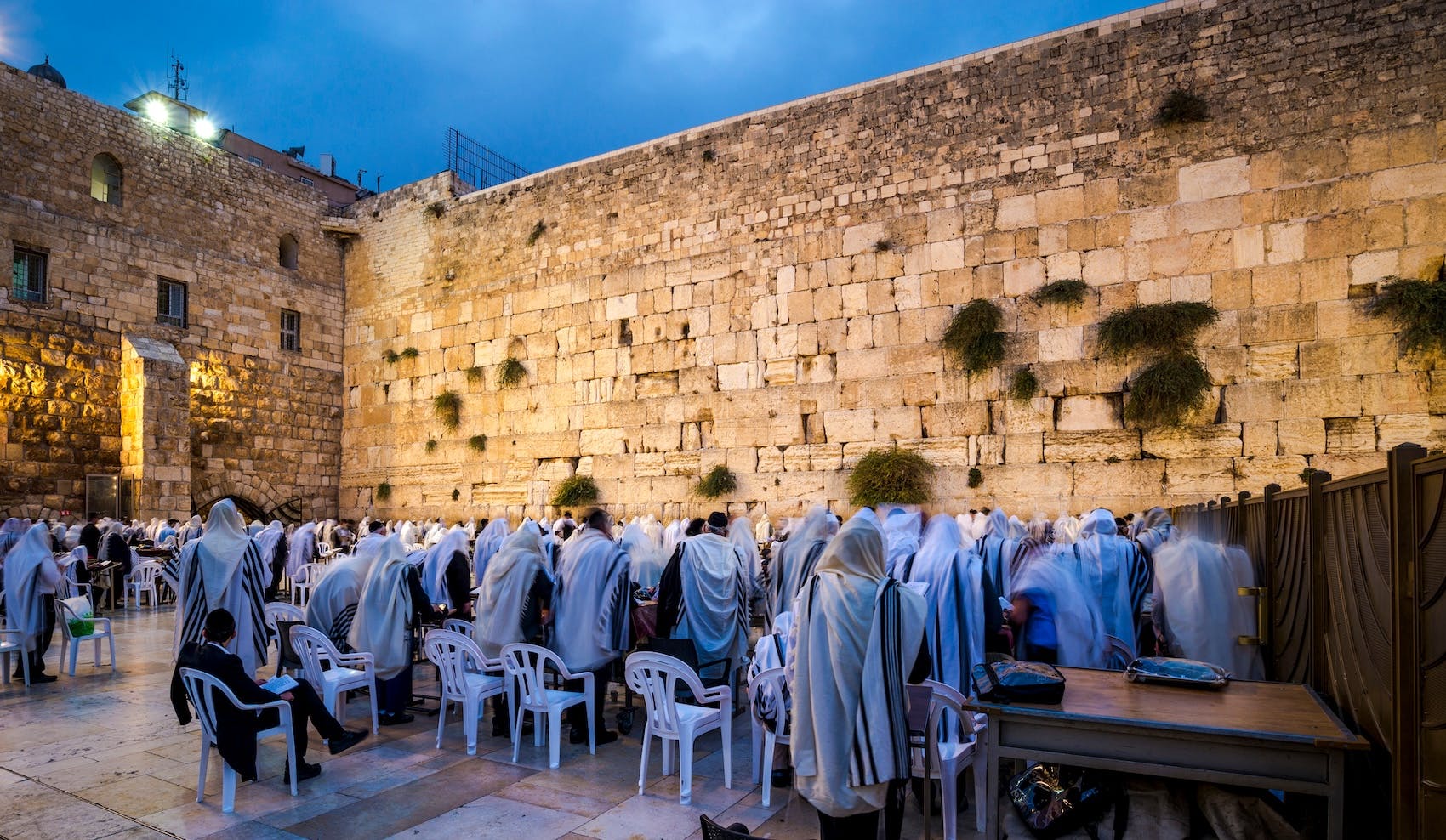In just a few weeks, we’ll be entering the autumn season. And with it, the season of high holidays on the Jewish calendar that prophetically indicate the great Day of the Lord, the second coming of Jesus, the great national turning of the Jewish people, and the establishment of the reign of the Messiah over the earth.
To accompany you on your own faith journey this season, we’ve assembled a brief overview of the upcoming holidays. Feel free to observe along with us, and mark the days with shared solemnity and joy.
Feast of Trumpets (Rosh HaShana)
"Speak to the children of Israel, saying: ‘In the seventh month, on the first day of the month, you shall have a sabbath-rest, a memorial of blowing of trumpets, a holy convocation."
Leviticus 23:24
In traditional Judaism, Rosh HaShanah is celebrated as the Jewish New Year. The holiday is observed on the first 2 days of the month of Tishrei. This also marks the beginning of a ten-day period of prayer, self-examination and repentance, known as Ten Day of Awe (Aseret Yemei Teshuvah, Yamim Nora’im), which culminates on the fast day of Yom Kippur. Rosh HaShanah also commemorates the creation of the universe by God.
Rosh Hashanah is also called “Yom Teru’ah”, The Feast of Trumpets. Tradition stated that the universe was created by the Lord on Rosh HaShanah.
Another name for Rosh Hashanah is “Yom Hazikaron”, Day of Remembrance (Lev. 23:24) in reference to the commandment to remember to blow the shofar to coronate God as King of the universe. The blast of the shofar is meant to jolt us from our sleep. We are to remember who we really are, by remembering that God is our King.
According to Jewish tradition, on Rosh Hashanah the destiny of the righteous is written in the Book of Life and the destiny of the wicked is written in the Book of Death. However, most people will not be inscribed in either book, but have 10 days – until Yom Kippur – to repent before sealing their fate. Hence the name, Ten Days of Awe.
On Yom Kippur, everyone’s name will be sealed in one of the books. That is why people greet each other during those days “Le’Shana Tova tichatevu ve’tichatemu” – May your name be written in the book of life.
Customs of the Holiday
1. Candle lighting and Kiddush
2. Round Challah loaves – signifying a crown and the Kingship of God. Also representing the cycle of the year.
3. “Simanim”—Special foods that each signify a wish for the new year, used in a special prayer:
Apples in honey – as a wish for a sweet new year.
Black-eyed Peas (Rubiya) - the word Rubiya comes from the word “Rabu”, to increase. “May our merits increase.”
Pumpkin (Kara) - Kara means to rip away. “May the evil judgment be ripped away from us and that our rights be read before You.”
Leeks (Karat) - Karat means to cut off. “May those who hate us be cut away.”
Beets (Selek) - Selek comes from the word ""Silek", to drive away. “May our enemies be driven away.”
Dates (Tamar) - Tamar comes from the word “Tam”, to be ended. “May those who hate us be ended.”
Pomegranate (Rimon) - “May our merits be numerous as the seeds of a pomegranate.”
Fish head (Dagim) - “May we be the head and not the tail.”
4. Tashlich (Casting Off) – on the 1st of Tishrei in the afternoon, many Jews perform the ritual of Tashlich, a ceremony in which we symbolically cast our sins into a body of flowing water. We walk to a creek or a river and empty our pockets into the water, symbolically casting off our sins. Verses are recited during this ceremony.
Day of Atonement (Yom Kippur)
Also the tenth day of this seventh month shall be the Day of Atonement. It shall be a holy convocation for you; you shall afflict your souls, and offer an offering made by fire to the Lord. And you shall do no work on that same day, for it is the Day of Atonement, to make atonement for you before the Lord your God. For any person who is not afflicted in soul on that same day shall be cut off from his people.
Leviticus 23:27-29
The Day of Atonement is the holiest day of the Jewish year and provides prophetic insight regarding the Second Coming of the Messiah, the restoration of national Israel, and the final judgment of the world. It is also a day that reveals the High-Priestly work of Yeshua as our High-Priest.
The Torah states that Yom Kippur was the only time when the high priest could enter the Holy of Holies and call upon the name of the Lord to offer blood sacrifice for the sins of the people. This “Life for a life” principle is the foundation of the sacrificial system and marked the great day of intercession made by the High Priest on behalf of Israel.
In traditional Judaism, Yom Kippur marks the climax of the ten-day period of repentance—The Days of Awe. According to the sages, on this day each person’s name is written either in the Book of Life or the Book of Death.
Yom Kippur begins at nightfall on the 9th of Tishrei and continues on the 10th for 25 hours. It is a solemn day marked by complete fasting, prayer, and additional synagogue services.
The Meaning of the Word Kippur
The root of the word Kippur (Atonement) is kafar (כפר), which derives from the word kofer—ransom. It also means kapara—“redemption”. The great majority of usage in the Bible concern “making an atonement” by the priestly ritual of sprinkling the sacrificial blood to remove sin or defilement.
The lifeblood of the sacrificial animal was required in exchange for the lifeblood of the worshipper. This symbolism is further clarified by the action of the worshipper in placing his hand on the head of the sacrifice and confessing his sins over the animal, which was then killed or sent as a scapegoat.
The root also appears in the word kapporet—the Mercy Seat. The kapporet was the golden cover of the sacred chest in the Holy of Holies of the Temple, where the sacrificial blood was presented.
Modern Day Observances of Yom Kippur
Originally, Yom Kippur was focused on the role of the high priest and the purification of the Sanctuary, but since the destruction of the Temple in 70 AD, Rabbinic tradition states that each Jew is supposed to focus on his personal service of the Lord. Most of the prayers on Yom Kippur, therefore, revolve around the central theme of personal repentance and return.
The Five Afflictions
According to Jewish Law (Halacha), we must abstain from five forms of pleasure based on Lev. 23:27:
- Eating and drinking.
- Washing and bathing.
- Applying lotions or perfume.
- Wearing leather shoes.
- Marital relations.
Yom Kippur Eve
The fast begins an hour before sundown on the 9th of Tishrei and lasts 25 hours. A special meal is usually prepared – the last meal before sundown, called Se’udah Mafseket. The meal includes candle-lighting and special blessings are recited.
The Day of Yom Kippur
Most of Yom Kippur is spent at the synagogue, praying and listening to chants. It is essentially the last appeal and chance to change the judgment of God, to demonstrate repentance and make amends.
Feast of Tabernacles (Sukkot)
On the 15th day of Tishrei, the joyous feast of Sukkot begins and lasts 7 days, immediately followed by Simchat Torah.
During this time many Jewish families build a Sukka, a four-legged structure built in haste to remember the huts in which the people of Israel lived in during their 40 years sojourn in the desert. Observant Jews eat all their meals in the Sukka and even sleep in it.
After the people of Israel entered the promised land, Sukkot was associated with the autumn harvest and came to be known as Chag ha-Asif, the Festival of Ingathering at the end of the year. Certain customs were incorporated into the observance of Sukkot, including decorating the Sukka, performing special “wave” ceremonies of the “Four Species”, and others.
We are commanded to rejoice during the holiday of Sukkot for the blessings of God’s provision and care for our lives (Deut. 16:14-15).
The Great Fall Harvest Festival
Sukkot is the conclusion of the Jewish fall holidays and the last of the three pilgrimage festivals (Passover, Shavu’ot, and Sukkot).
You shall observe the Feast of Tabernacles seven days, when you have gathered from your threshing floor and from your winepress. And you shall rejoice in your feast, you and your son and your daughter, your male servant and your female servant and the Levite, the stranger and the fatherless and the widow, who are within your gates. Seven days you shall keep a sacred feast to the Lord your God in the place which the Lord chooses, because the Lord your God will bless you in all your produce and in all the work of your hands, so that you surely rejoice.
Deuteronomy 16:13-15
The word Joy/Rejoice appears several times regarding Sukkot. In ancient Israel, the joy of Sukkot was so great that it became known simply as “the Feast”. Later it was known as Z’man Simchatenu – The Season of Our Joy.
From an agricultural perspective in ancient Israel, Sukkot corresponded to the fruit harvest. Total joy would come after all the crops were harvested in the autumn, and thereby receive sustenance and provision for the coming year from the Lord. For this reason, Sukkot is also referred to as Hag Ha’Asif – the Feast of Ingathering.
From a spiritual perspective, Sukkot corresponds to the joy of knowing your sins were forgiven (during Yom Kippur), and also recalls God’s miraculous provision and care, after the deliverance from bondage in Egypt. Prophetically, Sukkot anticipates the coming kingdom of Yeshua wherein all the nations shall come up to Jerusalem to worship the Lord during the Feast (Zech. 14:16). Today Sukkot is a time to remember God’s sheltering presence and provision for us for the start of the New Year. In light of the work of Yeshua, our High Priest, we now have access to the Heavenly Temple of God.
Sukkot in the Scriptures
In biblical times, Sukkot was considered the most important of all the holidays. It is one of the three required festivals of the Lord.
The Torah explicitly commands three things regarding the festival of Sukkot:
- To gather the “Four Species” (Lev. 23:40)
- To rejoice before the Lord.
- To live in a Sukkah (Lev. 23:42)
The Four Species
- Etrog – a lemon-like citrus fruit referred to as “the fruit of beautiful trees”. The etrog symbolises the heart, suggesting that the fruit of the humble heart is most beautiful in the eyes of heaven.
- Lulav – a ripe date palm frond - “branches of palm trees”. The lulav must be sturdy and straight, with whole leaves that lay close together and are not broken at the top. It represents the spine or backbone of a person. A person who loves God with all his heart will be given a spiritual backbone, real conviction and strength.
- Hadas – three myrtle branches – “boughs of leafy trees”. The leaves resemble the shape of eyes and therefore it is associated with seeing and vision.
- Aravah – the leafy branch of a willow tree – “willows of the brook”. Two branches are needed for the “lulav” bundle. They represent the lips, the service of lips (prayer).
The four items are held together in a fragrant bouquet that is waved during each day of Sukkot. The usual practice is to recite the blessing and then wave the Lulav three times in six directions: forward, right, back, left, up and down – to proclaim God’s omnipresence.
The Sukkah
The Sukkah is a four-legged structure that commemorates the temporary dwellings of the people of Israel while they were in the desert. It is customary to start building the Sukkah at the end of Yom Kippur and decorate its inside. The sukkah should be big enough to hold a table and chairs for the family to dine in it. Observant Jews also sleep in it.
The purpose of the sukkah is to remind us of our forefathers in the desert and remind us that we are only human, frail in comparison to nature and the Creator. While sitting in the sukkah we feel the weather elements just like the people of Israel.
Simchat Torah (Rejoicing in the Torah)
This is the day that concludes the Feast of Sukkot.
Each week in synagogues all around the world, a portion from the Torah is chanted (parashah). The Torah has been divided into 54 portions (parshiyot) – one for each week of the year – so that in a course of a year, the entire Torah has been recited in services.
The final reading of the Torah occurs on Simchat Torah, a rabbinical festival celebrating the completion of the year’s Torah reading and the beginning of a new cycle.
During this holiday, the last Torah portion (from Deut.) is read as well as the first verses of the first portion (from Genesis), indicating that the study of Torah never ends. The idea that Torah study is cyclical finds expression in the joyous ritual of dancing round and round the Torah, known as hakafot.
Credit:
Parts of this article were written by John J. Parsons and were taken from:
http://www.hebrew4christians.com/Holidays/Fall_Holidays/Rosh_Hashannah/rosh_hashannah.html
http://www.hebrew4christians.com/Holidays/Fall_Holidays/Yom_Kippur/yom_kippur.html
http://www.hebrew4christians.com/Holidays/Fall_Holidays/Sukkot/sukkot.html





